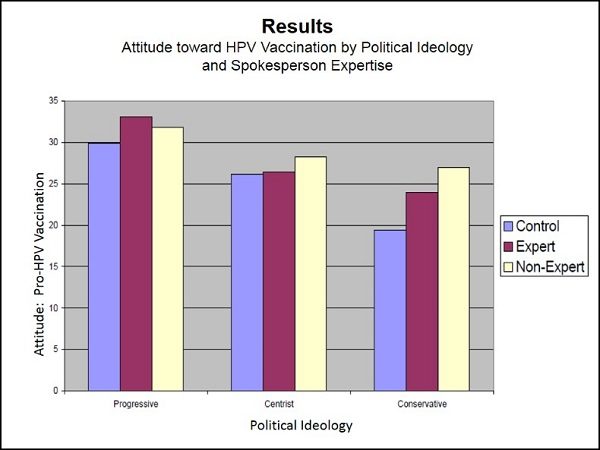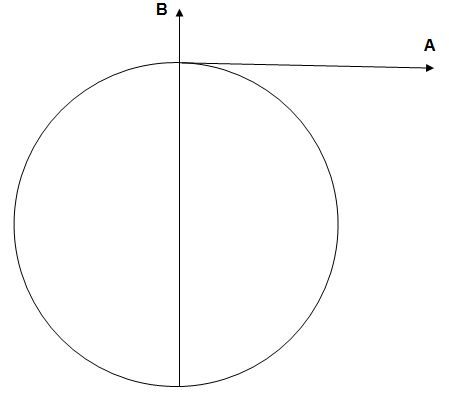Evolution & Marketing
What is the “marketing concept”?

One of my students emailed me with a question about a working definition of “the marketing concept” for a homework assignment. Her textbook had not arrived yet, and she wanted to know whether the WikiAnswers discussion she had found online would be appropriate.
After looking through my collection of marketing textbooks and comparing their definitions of “the marketing concept” with the online search-engine results, a few thoughts occurred to me.
The phrase “the marketing concept” is incomplete. It needs a qualifying prepositional explanation—something like, “the marketing concept of business,” or, “the marketing concept of exchange facilitation.”
And the reason for that need is that, as it is used in all these textbook and online discussions, “the marketing concept” can be properly understood only in the context of its evolution from earlier concepts of doing business or facilitating exchange.
The standard story of this evolution goes something like this:
The Product Concept (of Doing Business) – made by hand, often by experts using proprietary methods, products are relatively scarce. Demand far exceeds supply, and virtually all functional products will be sold. The more products you can make, the better for your business. This “concept” was dominant from the dawn of time until very recently.
The Sales Concept – the industrial revolution and mass production made it possible, for the first time in human history, for businesses to supply enough products to meet or exceed demand. To succeed in business, you now needed to be able to sell your products and to be able to charge enough to make a profit on them. Most of the textbooks and online discussions suggest that this “concept” held its position of dominance for only a tiny slice of the human timeline—variously described as from the 1920s or ‘30s or ’60s until the day before the authors wrote their books.
The Marketing Concept – here, finally, we have reached the pinnacle of human perfection with a business concept in which product producers compete with one another to satisfy the wants and needs of customers. Those who offer the greatest customer satisfaction will achieve the greatest success. Our most successful businesses now focus their product development, delivery, pricing and promotional efforts on building a reliable, friendly image.
This is done by conventional ads, but more so through social media with external companies that provide youtube views and likes like any other online product. On social media the lines between customer and producer become blurred and there is an imitation of a one-on-one, peer-to-peer relationship. Of course this is done rather cynically on the big companies’ part. They have zero intentions of becoming anyone’s friend or at least that is only a means to the final goal, which is building satisfying exchange relationships with a loyal customer base—and long-term success requires nurturing and growing that customer base.
So How Smart Are We?
According to our marketing experts, this “marketing concept” of doing business—this advanced approach to developing exchange relationships—has been alive in the world for a few decades at most.
But vanity is the nature of humanity. We consider ourselves the most intelligent, advanced and successful life-form to ever inhabit the Earth – this despite the evidence that Neanderthals had larger brains, and yet died out; that insects and bacteria outnumber us by multiplication factors in the millions; and that a strong argument can be made that the dominant life-form on Earth is the virus.

Consider the orchid, of which there are thousands of successful varieties, most considered brainless. For millions of years, orchids have been building and satisfying loyal customer bases using all the methods of humanity’s most advanced business concept:
Product offering: sweet, satisfying and health-promoting nectar—just what a hungry insect and/or bird might need.
Distribution scheme: self-service. We have locations in your neighborhood, and we’re open for business whenever you’re hungry.
Price: so much to offer, so little weight to bear. All we ask is that you carry our pollen to other orchids.
Promotion: you can see our distinct colors and shapes from meters away, and you can smell our unmistakable aroma for hundreds of meters. And when you get here, we’ll make it worth the trip. Come back often, and be sure to tell your friends!
References
“What is the evolution of the marketing concept” (n.d.) Accessed 7/9/14 at
http://wiki.answers.com/Q/What_is_the_evolution_of_the_marketing_concept
Pride, W; Ferrell, O (2009) Marketing Express. Mason, OH: South-Western, p. 7-12.
White Orchid Image: White orchid blossom photo taken at Phipps Conservatory in Pittsburgh in 2005. Accessed 7/9/14 at http://en.wikipedia.org/wiki/File:White_Orchid.jpg
Tiger Orchid Image: Found in one of the Pictures folders on my hard drive.
Train Your Auto Pilot
The way even the most complicated software works is a bit at a time. Or a byte. Programs are made up of sequences of routines, which are made up of sub-routines, and the finished programs join them all together.
My son taught himself to play the impossibly fast passages in Mozart’s Clarinet Quintet by breaking the hard parts down into small groups of three or four notes, and practicing the small groups until they were mastered. This is not dissimilar to the routines and sub-routines found in programming. He joined the groups of notes together, slowly, until they could be played more quickly. Eventually he joined all the groups together into an astonishing performance.
He learned this technique of training his Auto Pilot with the help of a succession of inspired music teachers. Some of them called it, “Building muscle memory.”
Actually, I have heard this “muscle memory” explanation a lot, and it bothers me. Last I heard, muscles don’t have memories, but they are controlled by something that does—the brain.
I think there may be an unconscious urge to shy away from thinking about the things the brain may be doing that we are not aware of. (Maybe the Auto Pilot wants to stay hidden?) I hear other aspects of Auto Pilot behavior chalked up to simply being habits, as if a habit is not something our brain learns to do while we are not consciously trying to learn anything.
The part and/or function of the brain I call the Auto Pilot (and that T.D. Wilson, in Strangers to Ourselves, calls “the adaptive unconscious”) is observing and learning constantly, and using what it learns to predict what will happen next so that it can direct our bodies to take appropriate actions. These actions are not limited to simple sequences of muscle movements, but can include complex behavior patterns.
So, for instance, when we are crossing the street, our Auto Pilot notices how close we are to the curb so we don’t trip; notices the puddle so we avoid it; notices the car that is about to hit the puddle and splash cold, muddy water near us—and before the splash ever happens, we are already back-pedaling to stay dry.
The Auto Pilot doesn’t have eyes in the back of our head, however, so when the bicyclist who is coming up behind us shouts angrily at us for backing up unexpectedly into his path, it registers surprise – and so do we, swiveling our heads to see where the biker is and leaping quickly out of his path, and maybe flipping him the bird while we’re at it.
The Auto Pilot is always learning, and always making predictions. If reality falls in line with our Auto Pilot expectations, we can go humming along merrily through the day, not having our attention directed to unexpected bikers and other things that may surprise us. And this, I believe, is our usual state of affairs: busy paying attention to something else—a phone conversation, a memory, a worry—while cruising on Auto Pilot.
The default control of our Auto Pilot and this learning-predicting-surprising sequence has tremendous implications for marketers, especially advertisers and brand managers. Here are three quick take-aways for them:
(1) Advertisers who want to get their advertising noticed would do well to find ways to surprise the Auto Pilot.
(2) To build brand equity, a brand manager would do well to try to teach the Auto Pilot to predict positive experiences in connection with the brand.
(3) If you have a dominant position in the marketplace, avoid surprises and don’t defy any expectations. Just show a smiling kid eating your Happy Meal and make sure the Drive-Thru is open.
Living on Auto Pilot
A few years ago, the company I was working for moved its offices from Troy NY to Albany NY.
To get to the new offices, I needed to stay on Route I-90 all the way to exit 1 (I-87) instead of getting off at exit 7 (I-787), the turn-off for Troy, which I had been taking every day for several years.
In the first week after the move, I got off at the wrong exit four out of five times.
I got off at exit 7 three times, heading to my old offices. The other wrong time, I resisted the temptation to get off at exit 7, but still screwed up. Instead of staying on I-90 all the way to exit 1, I got off at exit 2 and headed toward a popular shopping mall I have visited many times.
In describing my navigation difficulties to my marketing class that week, I claimed it was evidence that people spend much of their supposedly conscious lives operating on Auto Pilot.
The second week, I only took the wrong turn twice. (Apparently I was still, even at my advanced age, capable of learning.) The following week, I again found myself traveling north on Route 787 when I should have been going west on Route I-90, and a few conceptual puzzle-pieces snapped into place.
The way our brains learn, consciously and unconsciously, has a profound influence on the whole spectrum of human behaviors, and every part of this puzzle should be of interest to people interested in marketing, advertising and persuasion. I could write about this for the next 50 years without running out of ways to entertain myself.
And I plan to.
I believe we spend most of our conscious hours engrossed in one or another kind of thought-activity while leaving control of our moment-to-moment actions on auto pilot. I don’t think we could survive if we didn’t.
Our auto pilots are so unobtrusive that few people ever give them a thought. Even when they lead people astray, as mine did when it took me to Troy instead of Albany, it is often just chalked up to “not paying attention.”
That’s another major issue for my next 50 years: who (or what) decides what I am going to pay attention to? How much of that decision do I leave up to my auto pilot?
The more I reflect on how much of my moment-to-moment behavior is under my conscious control versus on auto pilot, the more I realize that I am not just mostly ON auto pilot… I mostly AM my auto pilot.
As I understand things now, the person I present to the world is largely the stuff my auto pilot does automatically while I am thinking about something else.
That doesn’t mean my life is necessarily out of control—although if I don’t pay attention to the care and feeding of my auto pilot, it could well turn out that way. In fact, some people achieve great success through careful, systematic interaction with their auto pilots.
We all start our lives teaching our auto pilots the ropes of human living—how to relate the perceptions of our senses to the world around us. How to walk and talk and understand language. How to hold our forks and chew our food. How to find our way home. But we do this unconsciously. We don’t even need to know our auto pilots exist.
World-class musicians are one group of people who achieve success by learning how to consciously train their auto pilots. Elite athletes are another.
They have discovered that through systematic practice, their auto pilots can learn to perform incredibly complex behavioral routines that no one could hope to accomplish through a process of conscious decision-making.
Imagine asking someone who had never seen a piano to sight-read a Chopin waltz. Imagine asking a beginning skier to try negotiating the Olympic Giant Slalom course. These are things that can only be accomplished with highly trained auto pilots.
To be fully functioning humans, we owe it to ourselves to learn all we can about our auto pilots, and what we can do to help our unconscious behavior controllers perform in ways that can better accomplish our conscious objectives.
And the same goes for us as marketers. We need to learn how to train our customers’ auto pilots too.
SUGGESTED READING:
For more insights into the ways our auto pilots shape how we behave and what we pay attention to, here’s a reference I cannot recommend strongly enough: Wilson, T.D. (2002) Strangers to ourselves: Discovering the adaptive unconscious. Cambridge, MA: Belknap Press of Harvard University.
Writing to Persuade & Get Paid
Some of what I learned in teaching persuasive writing
1. Emphasize the connection between audience interests and client objectives
2. Everybody needs to get better at punctuation and proofreading
I just finished teaching a new course in persuasive writing at the Sage College of Albany called “Writing to Persuade and Get Paid.”
My plan was to give the class members an opportunity to explore and practice the different writing styles, approaches and mindsets needed to succeed in advertising, public relations, marketing and website applications.
One size does not fit all when you are writing to persuade. Approaches that work in advertising will not work in public relations or as website content. Approaches geared for mass audiences such as those used in advertising, public relations and websites are generally not effective for the narrow-focus writing required for marketing plans and business proposals. Each genre requires good, competent writing, but each has specific requirements that are different from the others.
Advertising has to be intrusive and attention-getting because it needs to grab your audiences’ attention away from all the other persuasive messages that are competing for their attention. It also has to overcome their reluctance to be the target of unwanted advertising.
Writing for public relations may not call for as much verbal flamboyance as advertising, but it requires an understanding of newsworthiness and relationship building.
Marketing plans and business proposals need to provide a compelling, credible story that shows (not just explains) why your product, service, business or idea is going to provide tangible and emotionally satisfying rewards if your target audience takes the action you are advocating.
Website content is different from the three types of writing described above in that it is usually something your target audience is actively searching for, so instead of needing to convince reluctant audiences to pay attention, your job is to reward time-pressured and frustrated searchers for having found what they have been looking for.
In each case, you need to understand your audiences’ objectives as well as your own. And you achieve your greatest success when you understand that fulfilling your audiences’ objectives is the most certain route to achieving your own.
The first semester of a new course is always a learning process for the teacher as well as the students. This one was intended to be a course for good writers who wanted to become better writers. It turned out that although the class attracted students who definitely wanted to become better writers, we needed to spend a lot of effort working our way toward “good.”
While we were able to cover the basic writing formats and strategies for the different writing genres, the most valuable lessons involved studying up on punctuation and proofreading rather than persuasion.
Since we are being alliterative, it might be apropos to call it a prioritization process. Proper punctuation and proofreading are prerequisites for persuasion.




